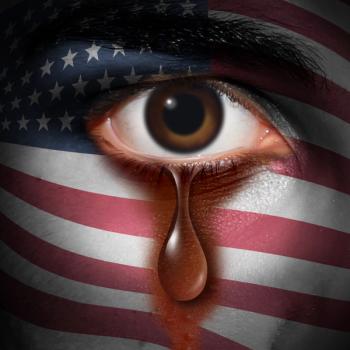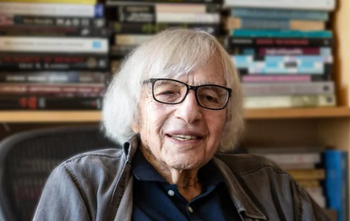
Mass Murder in the Digital Age
Recognizing violent incidents as “acts of domestic terrorism” contribute nothing toward our understanding of the mental processes that drive such behavior. More in this commentary.
COMMENTARY
With now near
Recognizing these murders as “acts of domestic terrorism” may allow for more resources to be allocated to subsequent investigations but will contribute nothing toward our understanding of the mental processes that drive such a killer.
Identifying mass murderers as “disenfranchised white males” only plays into identitarian politics-that is, post WWII, far right ideology-and keeps the discussion skin deep. Branding these acts as “hate crimes” is also woefully inaccurate, unless the “hate” refers to the almost certain self-loathing of the perpetrator. Most mass murder victims are people wholly unknown to the murderer. Unlike crimes of passion, there is almost certainly no personal animosity between a mass murderer and his victim. These crimes are more analogous to video games. The killing is more metaphorical than fueled by any particular “hatred.” The murderers are racking up points more than anything, as many as possible before their own (expected) demise.
Stepping back a bit, with a critical and historical eye, mass murder was an anomaly until the 1990s, accelerating tremendously through the early 2000s until now. Weaponry has not really improved much during that span. The logical question is what happened during those years to spur such an increase in violence? Did mental illness explode? One may argue so, I suppose, as the rates of suicide have
Again, this would depend on one’s definition of hatred. Generally, people who kill in cold blood are not fueled by hatred of their victims, but more perhaps by self-hatred, or hatred of an ideal.3 Planned, well-executed mass murders cannot really be viewed as crimes of passion. If anything, these are more crimes of ambivalence, with the flesh and blood victim providing the same transient “rush” as the virtual-victim, again, in a video game.
I come back to the video game analogy on purpose. The World Wide Web came into existence in 1991. It gained international traction in 1993, erupting in infinite directions with absolutely no restriction or regulation. And although the “smart”-phone was invented in 1992, “social” media-the most massive collection of pornography, hatred, violence, and vitriol the world has ever known-was unleashed without restraint with the development of the “I”-phone in 2007.
No one had any idea what all this might do to the collective human psyche.
How did we get here?
In this context, much effort is being made now to demonize the mass murderer as a product of “white supremacist” “ideology,” somehow considered a “logical” extension of several hundred years of eroding “white privilege.” Of course, this contention, dubious as it is, only works for the “white” mass murderer. It does not account for the roughly
The historical course of “eroding white privilege” is really the logical progression of the then neoliberal ideals come to fruition during the 18th century, the so-called Age of Enlightenment, culminating in the American and French Revolutions. The grievance with monarchy at the time was, at its core, the middle class, the business class, desire for increasingly liberal economic policies, the desire to “spread the wealth” more from the kings, the government, to the people. This was a gradual process at first, co-occurring with social welfare laws designed to keep this burgeoning “capitalism” from spinning out of control.
Predictably, exploitation became the rule, and resistance to this generally dehumanizing process was stiff. The 19th and 20th centuries were obviously riddled with brutal conflicts over this single principle. The word “terrorist” first emerged during this revolutionary age, used to describe both right- and left-wing political extremists.
With the collapse of the Soviet Union and its satellite communist states in the 1980s, neoliberal capitalism won the day. History ended in 1989, according to some,5 coinciding with the birth of virtual culture. And with this incredibly powerful new tool, really an economic doomsday device, capitalist forces in their most brutal, pure, and exploitative forms were suddenly unleashed without an ounce of forethought.
Globalization and the corporate state
“Globalization” became the new buzzword.
The human brain has changed accordingly. Desperately trying to process the 24-7 stimulation of the virtual world, is there really much wonder at the stupendous rise in autism rates over this time period, the steep rise in ADHD, the general fragmentation of personality and identity, and the increase in suicide? There is certainly little wonder at the appeal of intoxicating substances and the lure of a virtual existence over a real one. Frankly, there is little wonder at the inability to consider more deeply than the surface, and the disproportionate passion invested in single issues.
The virtual world is tremendously isolating. It is brutal and unforgiving. German-Korean critic Byung-Chul Han6 was perhaps the
Just prior to the digital age, moral philosopher Philip Hallie7 wrote extensively on the nature of cruelty, distinguishing between episodic and institutional cruelty. Episodic cruelty is the easy kind, where the victim and perpetrator are both aware an act of cruelty is occurring. Institutional cruelty applies more to one’s daily existence. A debt-credit culture, a skewed judicial culture, an unfair contract culture. A bureaucratic culture epitomized early in
So why then mass murder?
The question may well also be inverted as to why such acceleration in suicide? The superficial profile of the suicide and homicide is essentially the same: the “disenfranchised white male.”
The answer probably lies within the tremendous self-loathing at the heart of the otherwise impotent virtual psyche. The “swarm” is a virtual id with no constraining cyber-superego. It needs victims. The easiest, safest, and fully sanctioned target at this point, is the now faceless and colorless, so-called “white male”-by now come to represent everything the swarm hates about itself. And the cyber-realm is the perfect stage for projective identification. The victimizer is victimized to the point that he honors the unconscious fantasy of his perceived tormenters. And he does so at times with the drama the swarm demands.
None of this, of course, allows for any meaningful discussion. Politics, on all sides, has degenerated into such profound immaturity and snark, in embarrassing efforts to appease the swarm, that who would dare offer or entertain contrary opinions? Look at psychiatry’s own historical tendency to blow with the political winds, intensifying as well as in recent years, in the face at times of mountains of contrary evidence that cannot be acknowledged over concerns for digital retaliation.
Disconnecting from the storm, and encouraging our patients to detach from the fray, is the first logical step.
Editor's note: The views expressed in this article are those of the author and do not necessarily reflect the opinions of Psychiatric Times.
Dr Martinis Director of Medical Psychiatry at the Newton-Wellesley Hospital in Newton, MA, and a Clinical Assistant Professor of Psychiatry at Tufts University School of Medicine in Boston.
References:
1. Gun Violence.
2. Center for Disease Control. Suicide rates rising across the U.S.
3. Lankford A. The Myth of Martyrdom: What Really Drives Suicide Bombers, Rampage Shooters, and Other Self-Destructive Killers. New York: St. Martin’s Press; 2013.
4. Follman M, Aronsen G, Pan D. US Mass Shootings, 1982-2019: Data From Mother Jones’ Investigation. Mother Jones. December 11, 2019.
5. Francis Fukuyama, The End of History and the Last Man, The Free Press, New York, 2006.
6. Han B-H.
7. Hallie P. From cruelty to goodness. In: Sommers C, Sommers F, Editors. Vice and Virtue in Everyday Life. San Diego: Harcourt College Publishers; 1989: 9-24.
8. Reiner S. Death by Data: How Kafka’s The Trial Prefigured the Nightmare of the Modern Surveillance State. New Statesman. January 16, 2014.
Newsletter
Receive trusted psychiatric news, expert analysis, and clinical insights — subscribe today to support your practice and your patients.













